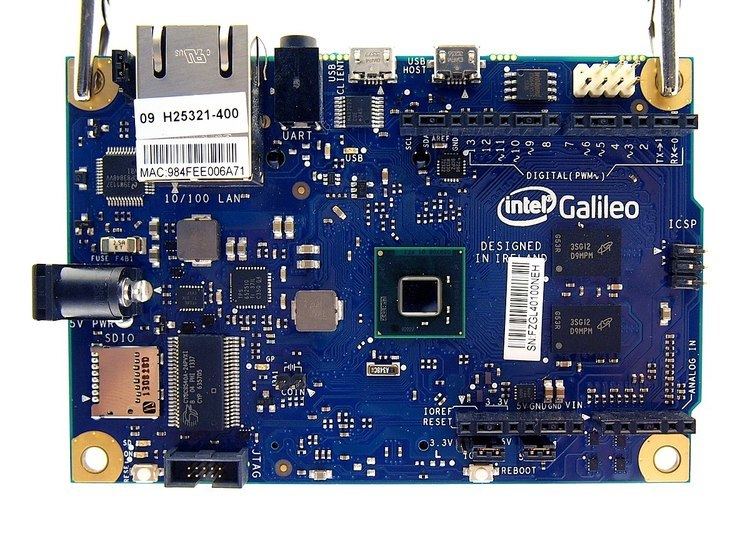Release date 17 October 2013 | Introductory price US$70 | |
 | ||
Operating system CPU Intel Quark X1000 400 MHz | ||
Intel Galileo is the first in a line of Arduino-certified development boards based on Intel x86 architecture and is designed for the maker and education communities. Intel released two versions of Galileo, referred to as Gen 1 and Gen 2.
Intel Galileo combines Intel technology with support for Arduino ready-made hardware expansion cards (called "shields") and the Arduino software development environment and libraries. The development board runs an open source Linux operating system with the Arduino software libraries, enabling re-use of existing software, called "sketches". Intel Galileo can be programmed through OS X, Microsoft Windows and Linux host operating software. The board is also designed to be hardware and software compatible with the Arduino shield ecosystem.
Intel Galileo features the Intel Quark SoC X1000, the first product from the Intel Quark technology family of low-power, small-core products. Intel Quark represents Intel's attempt to compete within markets such as the Internet of Things and wearable computing. Designed in Ireland, the Quark SoC X1000 is a 32-bit, single core, single-thread, Pentium (P54C/i586) instruction set architecture (ISA)-compatible CPU, operating at speeds up to 400 MHz.
In addition to supporting the Arduino shield ecosystem, the Intel development board comes with several computing industry standard I/O interfaces, including ACPI, PCI Express, 10/100 Mbit Ethernet, Micro SD or SDHD, USB 2.0 device and EHCI/OHCI USB host ports, high-speed UART, RS-232 serial port, programmable 8 MB NOR flash, and a JTAG port for easy debug. Intel Galileo supports the Arduino IDE running atop an unmodified Linux software stack, supported by a common open source tool chain.
Intel Galileo Gen 2 Is similar to Gen 1 with the following changes:
